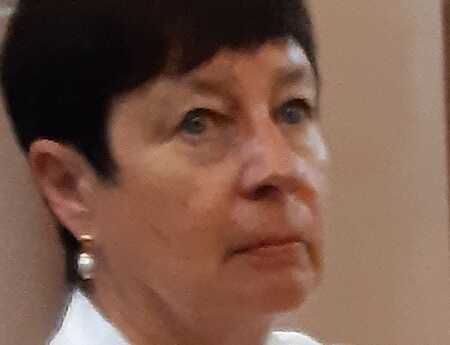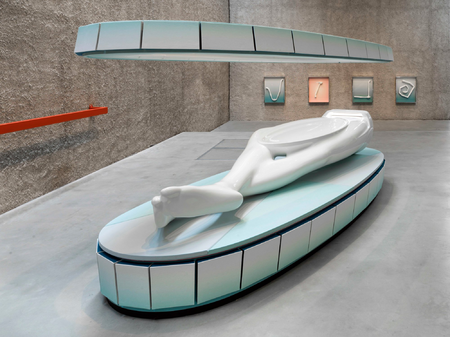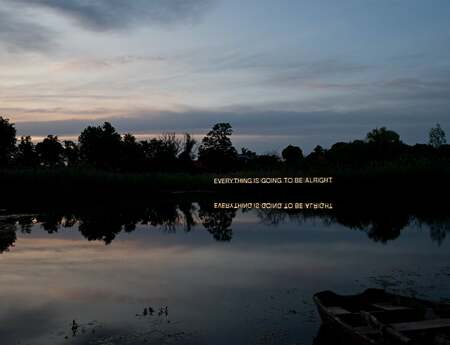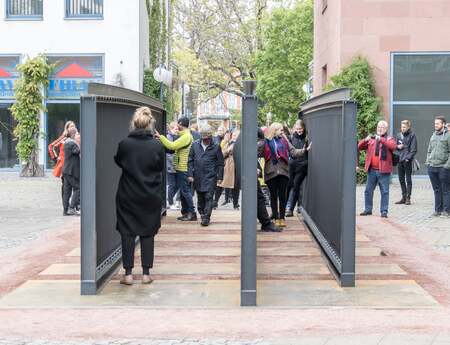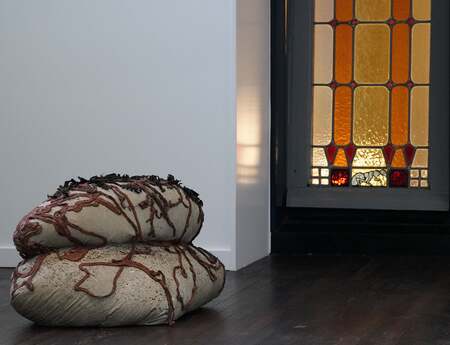The New Trinity: Virology, Sterility and Hygiene
Andreas Schmitten’s Exhibition SESSHAFT in Berlin.
Upon entering the Nave, as the exhibition space is now called by the König Galerie in Berlin, you are guaranteed to be impressed. St. Agnes, a former Catholic church in Berlin Kreuzberg, was built in 1967 by Werner Düttmann as a work of Brutalism and, in 2015, was sensitively transformed into an exhibition venue by the Brandlhuber architecture firm. The space is 35 meters long, 12 meters wide and 20 meters high, with walls made of sprayed plaster. Skylights and vertical strip lights provide indirect light, and if the sunlight falls correctly — which is exactly what happened during my visit— the interaction between light and shadow adds another graphic element on top of what is already happening in the exhibition.
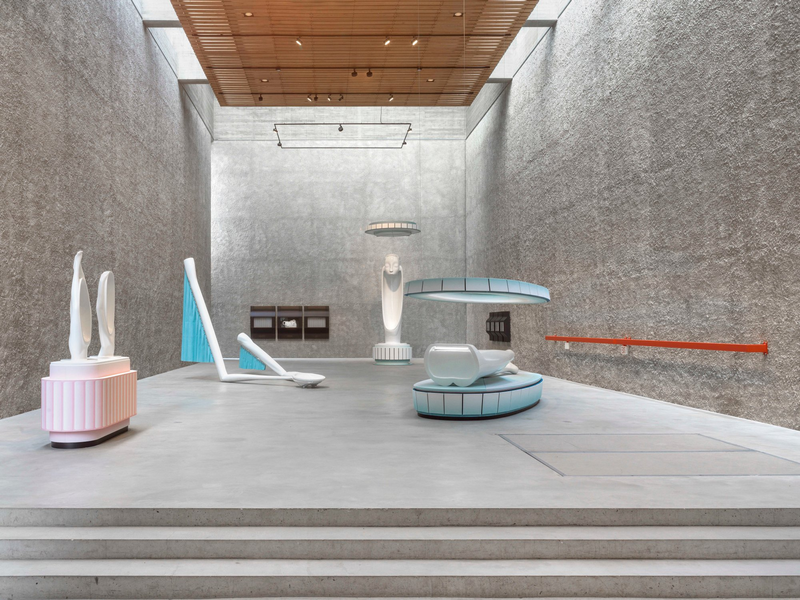
White sculptures, the solarium, toothbrushes, Madonna: at first glance they all seem to be part of a film set. Sculptor Andreas Schmitten works with both computer animation and traditional craftsmanship. As a child he made models of cities and spaces, later studying with Georg Herold in Düsseldorf and then living in Los Angeles for three years to learn about 3D technology in Hollywood. In LA, he was wowed by the way that the bars, restaurants, and stores were staged as if they were movie sets, which is unsurprising in a city that makes dreams into films.
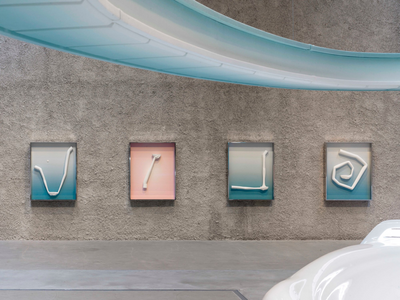
Schmitten’s color palette consists of pink, white and pale blue, his forms are organic, and his constructions are reminiscent of the human form. In some respects this references the 1950s, which, as a person born in 1980, is already considered history for him. However in others, the sculptures bear a strong resemblance to the works of painter David Hockney, which were created in LA in the 1990s and also included anthropomorphic forms. Hockney, who hails from the rainy north of England, marveled greatly at “the Americans who are always showering,” which he captured in many paintings depicting men in the shower. His pool paintings depict another aspect of the Californian lifestyle.
Not so long ago, Europeans thought American hygiene habits were an expression of US-typical idiosyncrasies. But since the pandemic, people in Europe have realized the importance of hygiene measures as well. In an attempt to contain the virus, we regularly disinfect our hands, wear masks, and keep our distance from each other. With that in mind, the artist modified the exhibition that was planned pre-pandemic.
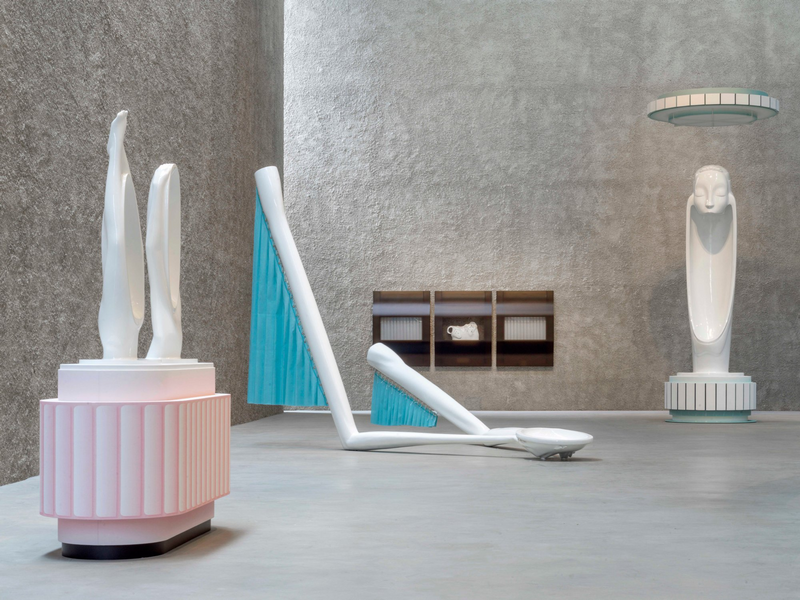
On display will be four free-standing sculptures and several specially crafted display cases. Pelvises, urinals, arms, legs, feet, and hands emerge and meld into each other. It is suggested that the most famous “readymade” in the history of art is the urinal that was acquired in a sanitary store and entitled “Fountain”. Marcel Duchamp had signed it “R. Mutt 1917” and hung it upside down in a gallery. But with Schmitten, we are dealing with craftmanship. His sculptures are bronze, and painted and hand-polished in the most elaborate process so that their surfaces emulate those of bathtubs or toilet bowls.
We no longer pray to the Virgin Mary; today’s trinity is called virology, sterility and hygiene. Andreas Schmitten spectacularly stages these new goddesses in a former church.
Cover picture: Andreas Schmitten Sesshaft (c) Roman März

